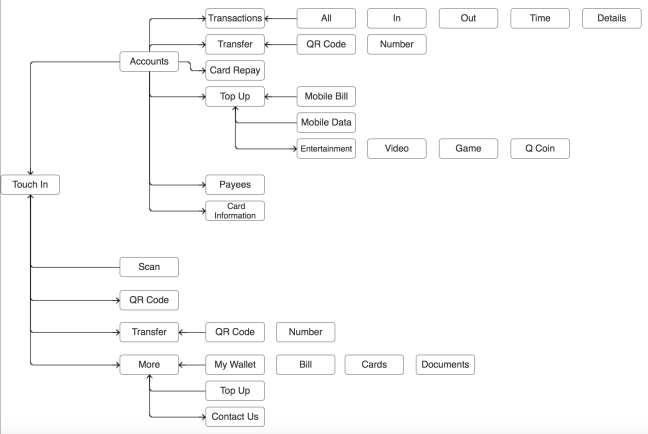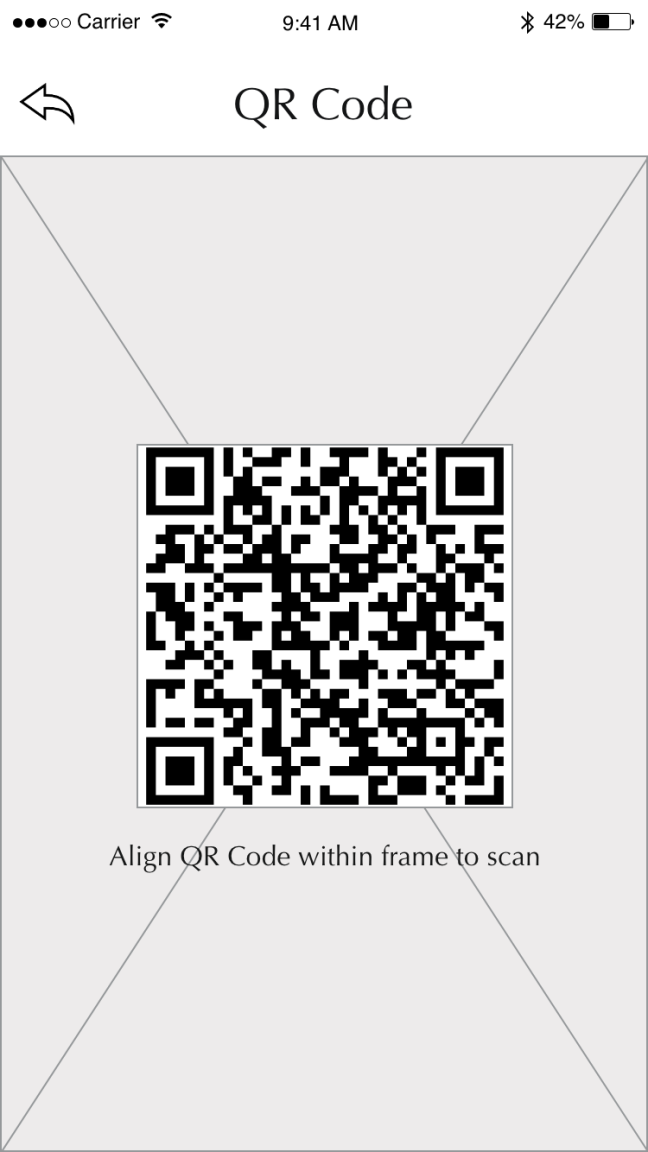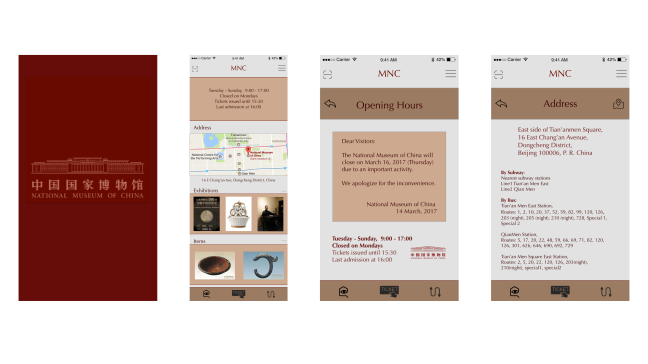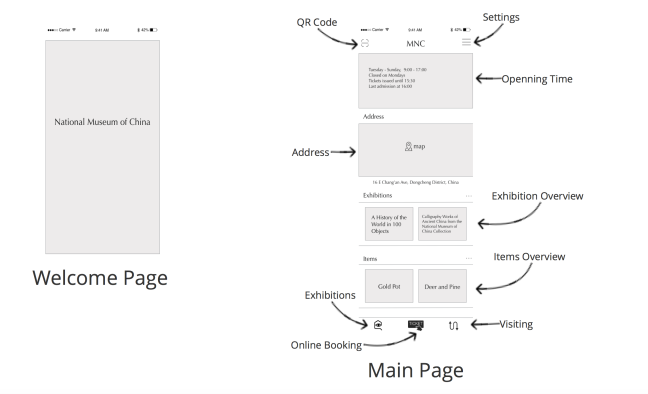

NMC Gif


ICBC UX Sketch


NMC UX Rebuild 2




Competition Ananlysis


NMC UX Design


GUI






Wireframe&User Flow






Process of Project 1
Background:
According to analysis of almost 500 art museums worldwide, it can be seen that museums that expanded between 2007 and 2014 saw their attendance rise significantly faster than museums that did not. The annual attendance of expanded museums rose 14.1%, on average, compared with 10.2% for museums that did not expand—a statistically significant difference (Visitor Figures, 2015). Also in China, As of the end of 2015, the national registered museum has reached 4692, of which 3582 state-owned museums, non-state museums 1110, respectively, the total number of museums 76.3% and 23.7%.The number of visitors is about 700 million(xinhua.com). Therefore, there is a huge potential for Chinese museums market, and that is why it is positioning this project in China.
As to why to choose the National Museum of China (NMC) because it hold leading within China. NMC as an unified national museum under the Ministry of Culture of China, decorates from both history and art and is committed to its collections, exhibitions, research, archeology, public education and cultural communication. The basic functions of NMC are collections of cultural relics and artworks, exhibitions, public education, history and art research and cultural communication.
Research:
Platform Selection:
In the present China, basically every museum has its own official website. Although some of them lack of professionalism, compared to the number of APP is more common. China has only a handful of museums have their own APP, such as the National Palace Museum, Nanjing Museum, which for China’s museum market is not enough. The APP of NMC still stay in very primary stage, which does not have much help for users. However, if museums make good use of APP this platform, there will be considerable benefits. First of all, it is very convenient, easy to query information or make an appointment of exhibitions. Secondly, APP has a wide range of functions, which can save time for users and provide information through the quickest way. Therefore, as the most representative museum in China, NMC has responsibility to develop their own APP to display its art, history and culture better for domestic and overseas users.
discovery:
Before doing user research, I was considering what kind of problem people in the earth need to solve through this APP? I assumed that users had three of the most important demands, which in the subsequent interview will be proved.
1. The latest or most popular exhibition information.
2. Planning tours route.
3. Exhibits description.
4. Peripheral souvenirs are purchased online.
5. Toilets found.
The above three questions is only my surmise. The problem definition will be modified based on the subsequent research.
demographic:
Due to cultural reasons, most Chinese people have never received museum education since childhood. In the past people went to museums was entirely for the travel punch, they relied heavily on the tour guide. Only a few of people went to museums spontaneously. But now the situation has improved a lot. Nearly 30 years, Beijing added a total of 133 museums, an average of 4 to 5 new each year. At present (2015), the Beijing area has a total of 172 registered museums, the number of museums in the world second(xinhua.com). Just in this year (2017), the exhibition named A History of the World in 100 Objects organised by the British Museum and the NMC has been greatly welcomed in China. It can be seen that the cultural needs of the Chinese people are increasing rapidly. Therefore, the NMC as a first-class museum, the target users of its APP are extensive.
1. Students (16-25)
For students, the biggest purpose of visiting museums is to learn and grow knowledge. Hence they may want to use APP to achieve the goal is to have a comprehensive understanding of the museum, and access to the details of the exhibits as much as possible. In this way, the two previous assumptions(exhibition information and exhibits description) can roughly meet the needs of students.
2. Young Adults (26-45)
For this group, most Chinese people have set up a family. They are well educational and hope that their next generation also has a wealth of cultural resources. They often have limited time and will be careful arrangements for travel. Therefore, their appeal for the APP can browse the latest Spreadtrum,structured planning tour route, also, it is best to check the parent-child activities.
3. Middle – aged (46-65)
This part of the target users are mostly intellectuals or social elites, they are likely to have been the museum more than once. So they use the purpose of APP is understand the popular exhibits in order to meet their spiritual and cultural needs. They may not care how to visit the museum in a day, they may spend whole day just to see several collections. Therefore, the APP can provide them with exhibition information and advance booking service.
Contextual interview
There are eight different age groups of Chinese people accepted the interview, most of the respondents were aged between 20 and 30 years old. The contents of their interview proved a part of my guess, but also provide a basis for the subsequent changes.
Main Questions:
1. Have you ever been to museums in Beijing? How’s your feeling?
2. What channels are you used to get information when you visit to museums?
3. What’s the most important information when you download a museum APP? or what purpose do you want the APP to help you achieve?
4. What do you think the museum is most appealing to you?
5. What situation do you usually use museum APP?
Summary of Answers:
1. Most people have visited the museums in Beijing, some people think it is very good, some people think that exhibits are not reasonable. In addition, people who think the exhibition is unreasonable have many experience of visiting overseas museums.
2. Most people get information according the museum’s official website or the museum’s social accounts. Some of them relay on friend’s recommendation.
3. Almost everyone’s priority demand is to get the latest and most popular exhibition information. The second requirement is exhibits’ introduction and online tickets. Moreover, tour route recommended is also a popular claim.
4. Most people enjoy the atmosphere of museums, that museums are a good learning platform. They can feel history, art and culture in museums.
5. Among interviewers, almost no one use Chinese museum app, they claim that APP can not meet their needs. They wanted use the APP to develop routes when they travel, book online tickets to save time and view interested exhibitions regularly.
define problem
Based on pre-interview contents, it can believe that the scope of the problem can be further narrowed. I want to focus on solving the following three problems:
1. The latest or most popular exhibition information, including online appointment and tickets.
2. Planning tours route.
3. Exhibits description, also including online appointment.
Choose these three solutions because it is the most basic feature of a museum APP, I believe by solving these problems for target users, it will let APP become a new platform for museum publicity. It is a win-win situation for both users and museums.
3 Projects
The next time I will start making my UX project.
Target APP rebuild (Mobile UX + UI Design) National Museum of China APP
Target website rebuild ( Web UX + Visual Design) ICBC Bank website
Competitive analysis DIANPING.COM & Yelp